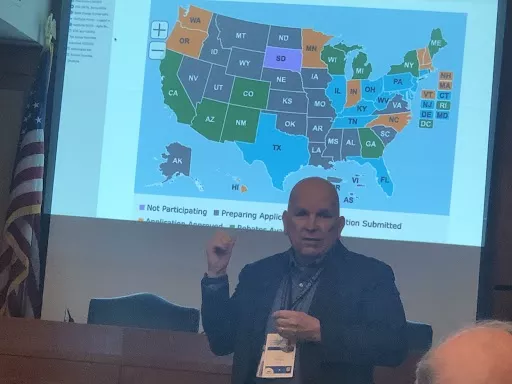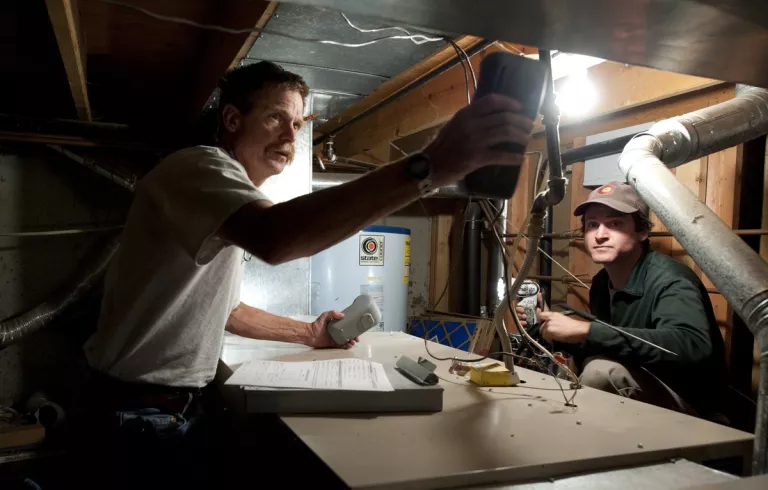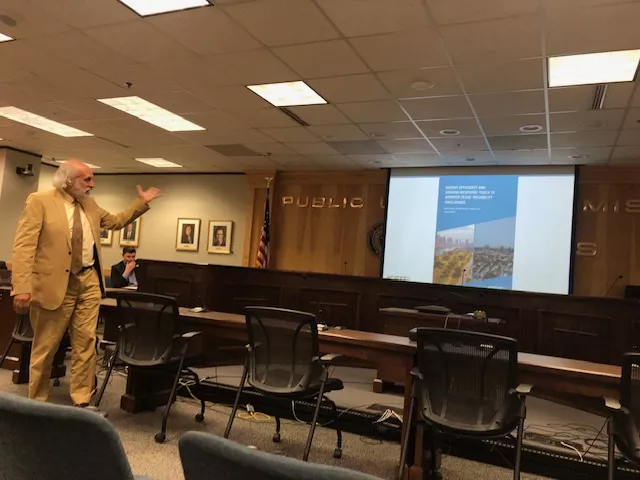Happy Thanksgiving! For many of us, this November might have seemed a bit bleak. Many candidates supported by the Sierra Club lost - big time - at the federal and local levels. 2024 will soon be declared either the first or second hottest year on record (WMO, 2024) - indicating that progress on fighting climate change is not going as needed. If you were to glance at more than 1800 bills prefiled at the Texas legislature, many have words we don’t like. Stay tuned - we’ll keep you updated on everything environmental as we head into the 89th Legislative Session.
As bleak as this November may feel, we’ve got good news to share: Texas could be receiving a a massive injection of federal funding - $690 million - to support energy efficiency programs, thanks to the Inflation Reduction Act (IRA).
This critical funding will empower Texans to make their homes more energy-efficient while reducing utility costs and greenhouse gas emissions. But the fight isn’t over. From regulatory battles to local action opportunities, there’s plenty to celebrate, and plenty to act on.

Photo credit Cyrus Reed - SECO Director Eddy Trevino announces application for $690M in federal funding from the Department of Energy for energy efficiency programs.
$690 Million in Federal Energy Efficiency Funding May be Headed to Texas
The State Energy Conservation Office (SECO), announced this week that they have formally applied to the Department of Energy for money authorized under the Inflation Reduction Act (IRA) for two programs known as HEARS and HOMES.
HOMES Rebate Program
The HOMES rebate program incentivizes whole-home retrofits in both single-family and multifamily dwelling units. Efficiency rebates are available to households of any income level, but rebate amounts are doubled for low- and moderate-income households. For the HOMES program, the rebate amounts will be determined based on energy savings using either a modeled or measured savings method. The modeled savings pathway will provide a rebate amount based on the estimated energy savings particular to a home at the time of the retrofit installation. The measured savings pathway will calculate rebates based on the actual energy savings after a certain period following the installation of the retrofit.
HEARS Rebate Program
The HEARS program is an appliance rebate program. The DOE has not determined which specific appliances will qualify but has indicated they will be ENERGY STAR® certified. Electrification rebates are available only to low- or moderate-income (LMI) households, as identified by Area Median Income (AMI). The rebate amounts are set by the IRA and are specifically targeted to LMI households.

Federal Energy Efficiency Monies Allocated to Texas
Here’s the breakdown of Texas allocations:
- HOMES: $346,022,980
- HEARS: $344,006,590
- Total: $690,029,570
This funding represents a major step forward, but timing is critical with a new administration set to take office. We urge the Department of Energy to approve SECO’s application quickly so Texans can benefit without delay.
PUCT and ERCOT Deliberate Key Decisions and Ancillary Services
What are ancillary services and why do they matter?
The PUCT recently began discussions related to so-called “ancillary” services, which are reliability services to keep the lights on. Ancillary services ensure grid reliability by balancing supply and demand during critical times. In 2023, the Texas Legislature authorized a new service, the Dispatchable Resource Reliability Service (DRRS), through its sunset bill, directing the Public Utility Commission of Texas (PUCT) and ERCOT to assess all ancillary services.
Questions include:
- Are current services sufficient?
- Are they cost-effective?
- When and how should they be deployed?
PUCT staff recently submitted final recommendations on ancillary services, including DRRS, sparking significant stakeholder debate.
Controversy Over DRRS: Cleaner Solutions vs. Corporate Interests
ERCOT’s proposed DRRS protocol has drawn criticism for limiting participation to “offline” coal and gas plants. Large energy companies like Vistra Energy have also lobbied to redefine DRRS as a “resource adequacy” tool, which would funnel additional ratepayer money to coal and gas plants.
A broad coalition - including industrial consumers, energy storage companies, and the Sierra Club - opposes this approach, advocating for DRRS to serve daily grid reliability needs. The coalition argues that DRRS should support modern, cleaner resources, including energy storage systems, rather than incentivizing polluting fossil fuel plants.
Decision Delayed: What's Next for DRRS?
What do the five PUCT commissioners think? We don’t know yet, because they have delayed making a decision until December 12th.
The good news is that the staff recommendation told ERCOT to ignore Vistra and others pushing to use ancillary services for a handout and told them to focus on keeping ancillary services as a daily service to keep the grid balanced and reliable. We are hopeful that the five commissioners will agree and also make it clear that DRRS should be open not only to “offline” coal and gas resources, but more modern cleaner online operators, including energy storage resources which don’t produce air pollution.
The Sierra Club will continue advocating for DRRS to prioritize grid reliability without corporate subsidies. By 2026, when DRRS is likely to launch, our goal is for the service to be open to all resources - particularly those that reduce emissions and modernize the grid, like battery storage.
Stay tuned for updates on this crucial decision that could shape the future of Texas’ energy system.

Demand Response Programs Take a Step Forward in Texas
Recently, the PUCT proposed a new rule that will help customers in the competitive ERCOT market save money through participation in so-called “demand response” programs. The Sierra Club played a key role in passage of SB 1699 which authorized the new programs and required the PUCT to set new goals for demand reduction from demand response programs. These programs utilize technologies like smart thermostats, batteries, or pool pumps to shift energy demand when the grid becomes stressed. While the legislation and rule adopted this week by the Commission is a modest step, it also comes with a new pilot program authorized by Oncor Electric working with four retail electric providers that will allow approximately 1,000 customers by next year to participate in residential demand response programs. A final rule is expected to be voted on at the PUCT next meeting on December 12th.
This rulemaking is only a first step towards people-first solutions that will support everyday Texans. For more than three years, we have been advocating for changes to the energy efficiency programs both at the Legislature and the PUCT. We are hoping that the PUCT will open up an additional rulemaking on the utility energy efficiency programs, which are paid for by ratepayers. While it is unlikely they will begin the process in 2024, we are pressing - along with all of you - for action in early 2025. In the meantime, keep telling our governor - who appoints the Commissioners at PUCT - that we want action.
Help us ensure solutions benefit everyday Texans, not just big utilities.
Upcoming Opportunity: Learn About Consumer Rights and the Electric Grid
Mark your calendar for December 12th @ 1PM! The Office of Public Utility Counsel (OPUC) is hosting a public meeting in the Capitol Extension Auditorium to discuss consumer rights, grid reliability, and the roles of PUCT and ERCOT. It’s a small agency, but the Office of Public Utility Counsel has a big role - defending the residential and small business consumer against high bills or poor service. This event will give the public an opportunity to better understand the Texas electric grid and the interconnected entities that must ensure a reliable, resilient grid for Texas consumers.